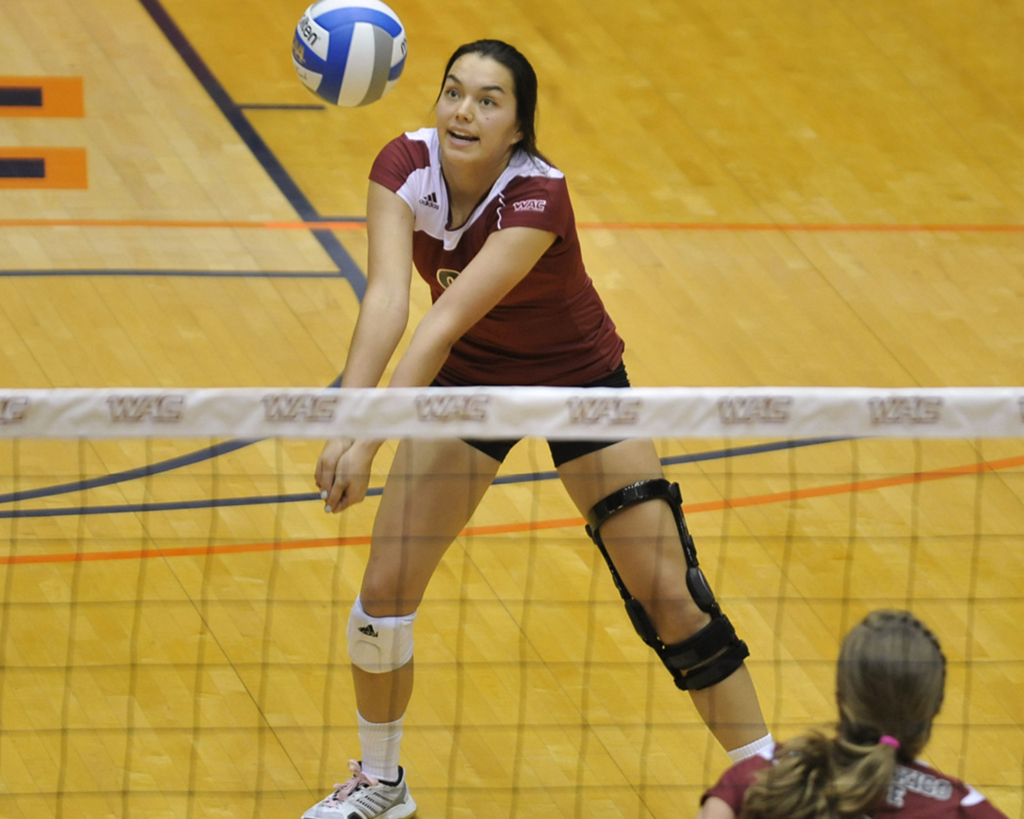A historical perspective of PCL bracing

Bradley Nash on the court during a volleyball game. Submitted photo by Bahram Mark Sobhani for the WAC – All Rights Reserved.
| Purpose |
Currently, there are many functional knee braces, but very few designed to treat the posterior cruciate ligament (PCL). No PCL braces have been biomechanically validated to demonstrate that they provide stability with proper force distribution to the PCL-deficient knee. The purpose of this review was to evaluate the history and current state of PCL bracing and to identify areas where further progress is required to improve patient outcomes and treatment options.
| Methods |
A PubMed search was conducted with the terms posterior cruciate ligament, rehabilitation, history, knee, and brace, and the relevant articles from 1967 to 2011 were analysed. A review of the current available PCL knee bracing options was performed.
| Results |
Little evidence exists from the eight relevant articles to support the biomechanical efficacy of nonoperative and postoperative PCL bracing protocols. Clinical outcomes reported improvements in reducing PCL laxity with anterior directed forces to the tibia during healing following PCL tears. Biomechanics research demonstrates that during knee flexion, the PCL experiences variable tensile forces. One knee brace has been specifically designed and clinically validated to improve stability in PCL-deficient knees during rehabilitation. While available PCL braces demonstrate beneficial patient outcomes, they lack evidence validating their biomechanical effectiveness.
| Conclusions |
There is limited information evaluating the specific effectiveness of PCL knee braces. A properly designed PCL brace should apply correct anatomic joint forces that vary with the knee flexion angle and also provide adjustability to satisfy the demands of various activities. No braces are currently available with biomechanical evidence that satisfies these requirements.
| References |
A historical perspective of PCL bracing, Jansson KS, Department of BioMedical Engineering, Steadman Philippon Research Institute, Vail CO, Costello KE, O’Brien L, Wijdicks CA, Laprade RF. Knee Surg Sports Traumatol Arthrosc. 2013 May;21(5):1064-70. doi: 10.1007/s00167-012-2048-9. Epub 2012 May 24.
| Further reading |
Quantification of functional brace forces for posterior cruciate ligament injuries on the knee joint: an in vivo investigation, LaPrade RF, Smith SD, Wilson KJ, Wijdicks CA. Knee Surg Sports Traumatol Arthrosc. 2015 Oct;23(10):3070-6. doi: 10.1007/s00167-014-3238-4. Epub 2014 Aug 22.
Posterior cruciate ligament tears: functional and postoperative rehabilitation, Pierce CM, O’Brien L, Griffin LW, Laprade RF. Knee Surg Sports Traumatol Arthrosc. 2013 May;21(5):1071-84. doi: 10.1007/s00167-012-1970-1. Epub 2012 Apr 8.
Biomechanical evaluation of a novel dynamic posterior cruciate ligament brace, Heinrichs CH, Schmoelz W, Mayr R, Keiler A, Schöttle PB, Attal R. Clin Biomech (Bristol, Avon). 2016 Mar;33:20-25. doi: 10.1016/j.clinbiomech.2016.02.001. Epub 2016 Feb 6.
